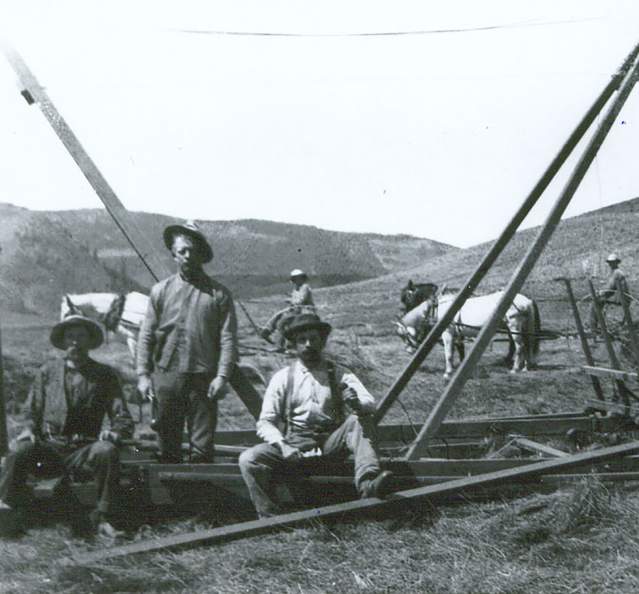Legends
LEGEND OF HOT SULPHUR SPRINGS
There is another Ute Indian legend concerning Hot Sulphur Springs. As the story goes, long before the arrival of the white men a party of Ute’s camped near the springs. The party was comprised of an elderly chief and several young braves. The braves wanted to cross the mountains to attack their enemies on the eastern plains in an attempt to win scalps, horses and whatever else they could carry home. But, the wise old chief advised that this wasn’t a good idea by pointing out that they were too few in number to put up a fight.
The next day, youth had its way and the braves departed on their mission of glory. The chief told them he would wait for their return at the springs. He built a fire in a gulch on what is now known as Mount Bross a short distance from the springs and began waiting for his companions’ return. The young warriors never returned, and the old man grieved himself to death. From that time to the present according to the Utes, the grieving chief’s campfire has warmed the springs and given the water healing properties.
The Utes made many journeys to the springs in search of health. Once, Chief Ouray, afflicted by a severe case of rheumatism, made the trip riding on a litter slung between two horses. He was able to mount a horse and ride home after bathing in the healing warm water. It wasn’t uncommon for the Native Americans to seek the same kinds of healing effects for their horses by subjecting them to the warm spring water.
THE PIONEERS ARRIVE
Early pioneers in Middle Park were primarily trappers and European hunting parties led by the likes of Jim Bridger and Kit Carson. The Utes, who’s chief bore the name Colorow, were described as cordial and quite curious in regard to the newcomers. For now, Middle Park was just a stop on a long trek through northern Colorado and wasn’t to be considered as a place to live until around 1859 when Charley Utter would be credited for building the first cabin at Hot Sulphur Springs.
The Colorado gold rush of 1859 brought some of the first white men to Middle Park although not for the promise of mineral wealth, yet. As things turn out, it’s the magical springs and the promise of direct travel west that would prove the greatest influence to the early history of Grand County.
Beverly D. Williams was from Kentucky and journeyed to Colorado under employ of the Leavenworth and Pikes Peak stage and express line in 1859. Once here, he soon found the desire to leave the L&PP and proposed a direct route from Denver to the new settlements in Utah. The military was interested in his ideas and sent him on several scouting expeditions in order to find the most likely path and included at least one visit to Middle Park.




